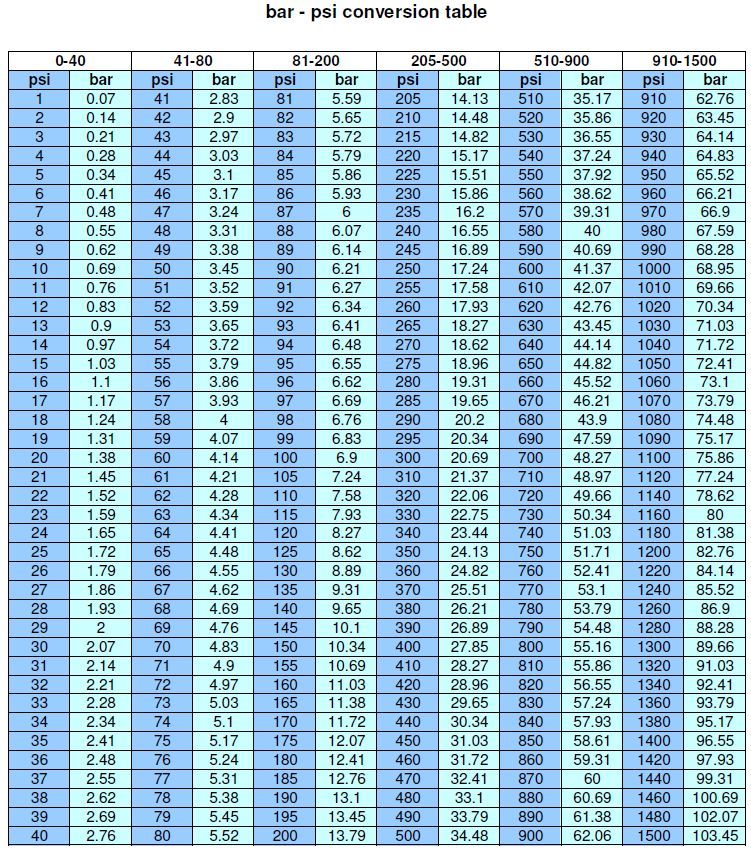

^ "Tensile Strength of Steel and Other Metals".Archived from the original on August 1, 2011. ^ "Glossary of Industrial Air Cleaning Technology".^ IEEE Standard Letter Symbols for Units of Measurement (SI Units, Customary Inch-Pound Units, and Certain Other Units), IEEE Std 260.1™-2004 (Revision of IEEE Std 260.1-1993).The conversions to and from SI are computed from exact definitions but result in a repeating decimal. Ultimate tensile strength of ASTM A36 steel: 58,000 psi.Land Rover Td5 diesel engine fuel injection pressure: 22,500 psi.Airbus A380 hydraulic system: 5,000 psig.
2500000 PA TO PSI FULL

Union Pacific Big Boy steam locomotive boiler: 300 psig.Steam locomotive fire tube boiler (UK, 20th century): 150–280 psig.Road racing bicycle tire overpressure: 120 psig.Railway air brakes or road brakes reservoir overpressure (common): 90–120 psig.Bicycle tire overpressure (common): 65 psig.Automobile tire overpressure (common): 32 psig.Atmospheric pressure at sea level (standard): 14.7 psia.Boost pressure provided by an automotive turbocharger (common): 6–15 psig.Natural gas residential piped in for consumer appliance 4–6 psig.Blood pressure – clinically normal human blood pressure (120/80 millimetre of mercury (mmHg): 2.32 psig/1.55 psig.Main article: Orders of magnitude (pressure) The conversion in SI units is 1 Mpsi = 6.895 GPa, or 1 GPa = 0.145 Mpsi. It is used in mechanics for the elastic modulus of materials, especially for metals. The megapound per square inch (Mpsi) is another multiple equal to a million psi. The conversion in SI units is 1 ksi = 6.895 MPa, or 1 MPa = 0.145 ksi. They are mostly used in materials science, where the tensile strength of a material is measured as a large number of psi. Ksi are not widely used for gas pressures. The kilopound per square inch ( ksi) is a scaled unit derived from psi, equivalent to a thousand psi (1000 lbf/in 2). When gauge pressure is referenced to something other than ambient atmospheric pressure, then the unit is pound per square inch differential ( psid). For example, a bicycle tire pumped up to 65 psig in a local atmospheric pressure at sea level (14.7 psi) will have a pressure of 79.7 psia (14.7 psi + 65 psi). The converse is pound per square inch gauge ( psig), indicating that the pressure is relative to atmospheric pressure. Since atmospheric pressure at sea level is around 14.7 psi (101 kilopascals), this will be added to any pressure reading made in air at sea level. The pound per square inch absolute ( psia) is used to make it clear that the pressure is relative to a vacuum rather than the ambient atmospheric pressure. In SI units, 1 psi is approximately 6,895 pascals. It is the pressure resulting from a force with magnitude of one pound-force applied to an area of one square inch. The pound per square inch (abbreviation: psi) or, more accurately, pound-force per square inch (symbol: lbf/in 2), is a unit of measurement of pressure or of stress based on avoirdupois units.

A pressure gauge reading in psi (red scale) and kPa (black scale)


 0 kommentar(er)
0 kommentar(er)
